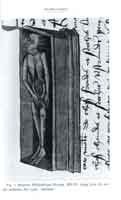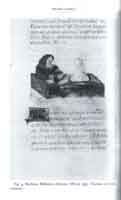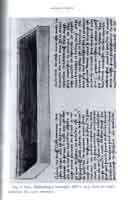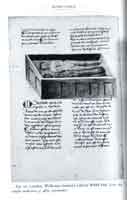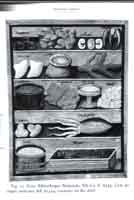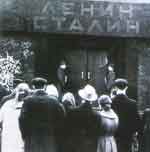
Stalin in the mausoleum, watched over by his successors who immediately embark on a power struggle; the stake is not only who is going to succeed the "Leader" but also whether the successor will manage to step out of the shadow of the "Leader".
Funeral ceremony, Red Square, Moscow. On the top of the Mausoleum:
Viacheslav Molotov, Kliment Vorosilov, Georgii Malenkov, Nikita Khruschev, Lavrentyii Beria.
Russian State Archives of Photo and Kinodocuments, Krasnogorsk.
|
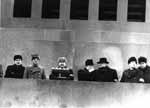 |
 |
|
|
"It seems legitimate to consider mummification as a special case derived from temporary burial."
Robert Hertz, Death and the Right Hand. Cohen & West, p. 42.
|
|
|
Minister of Health Care, Tretiakov`s report to Khruschev, March 10, 1953. "Today, on March 10, the embalming of J. V. Stalin`s body for a long term preservation has started. The embalming will be finished approximately by September 15."
|
|
|
|
|
|
|
"Between the entry on Marguerittes (oyster pearls) and the more famous Mandragora (the mandrake plant with its uncanny vegetable humanity) comes Momie."
|
|
|
|
|
|
|
"Momie or in Latin, mumia, not to be confused with modern popular conceptions of the bandage-wrapped pharaonic revenant, did not constitute the whole cadaver. The word of Persian origin Mūmiya, mūm or wax, described a liquid substance or exudate of corpses used as a drug."
|
|
|
|
|
|
|
"Authentic mumia was as precious as a relic and, in whatever the adulterated or spurious appearance of its later manifestations, it remained a popular medicine well into the sixteenth century, when in powdered form it could be found in the shops of all european apothecaries as a prescription drug. King Francois I carried a preparation of mummy about with him always for immediate use should accident or illness overtake him."
Camille, pp. 297-318.
|
|
|
|
|
|
© Open Society Archives


